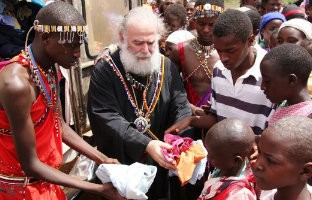The Orthodox in Africa

The worldwide expansion of Christianity over the past century is a tide that has lifted virtually all denominations—with one apparent exception. A hundred years ago, any account of the Christian world would have recognized three great streams: the Roman Catholic, Protestant and Orthodox. After 1917, though, the Orthodox churches suffered a long period of disastrous persecution and disruption, preventing them from engaging in anything like the global missionary expansion that has built such powerful new foundations for other churches. Today, many Orthodox churches are based in European countries that are faced with an alarming demographic decline. At first sight, then, in terms of raw numbers, the Orthodox future looks grim.
Few non-Orthodox observers would be surprised at this lack of global expansion, as they generally think of Orthodoxy strictly in ethnic terms, whether Russian, Greek, Serbian or Arab. In the film My Big Fat Greek Wedding, the non-Greek Ian accepts Orthodox baptism as a means of winning his sweetheart. He declares after the ceremony: “Now I’m really Greek!” If a religious conversion means no more than honorary admission to a given ethnic group, there seems little reason to consider it.
Yet Orthodoxy, past and present, has far more of a global presence than we might expect. Historically, Orthodoxy was no more tied to its ethnic roots than was French Catholicism or English Anglicanism, both of which made mighty advances on the mission frontier. Ironically, in view of the stereotype, Orthodox missionaries not only existed but proved to be creative and even heroic. When the early 19th-century Russian Empire tried to convert the native peoples of North America, missionary pioneers like St. Herman of Alaska struggled to prevent colonial officials from oppressing their Aleut converts, and they moved quickly to create a written language in order to translate scriptures and other texts.




